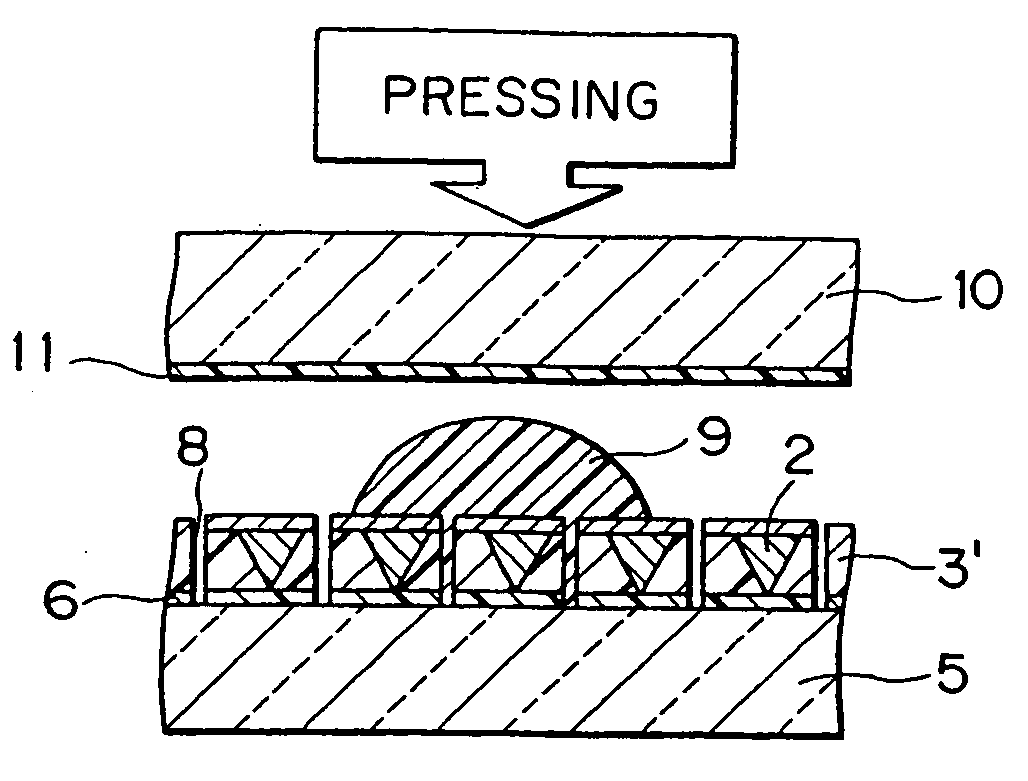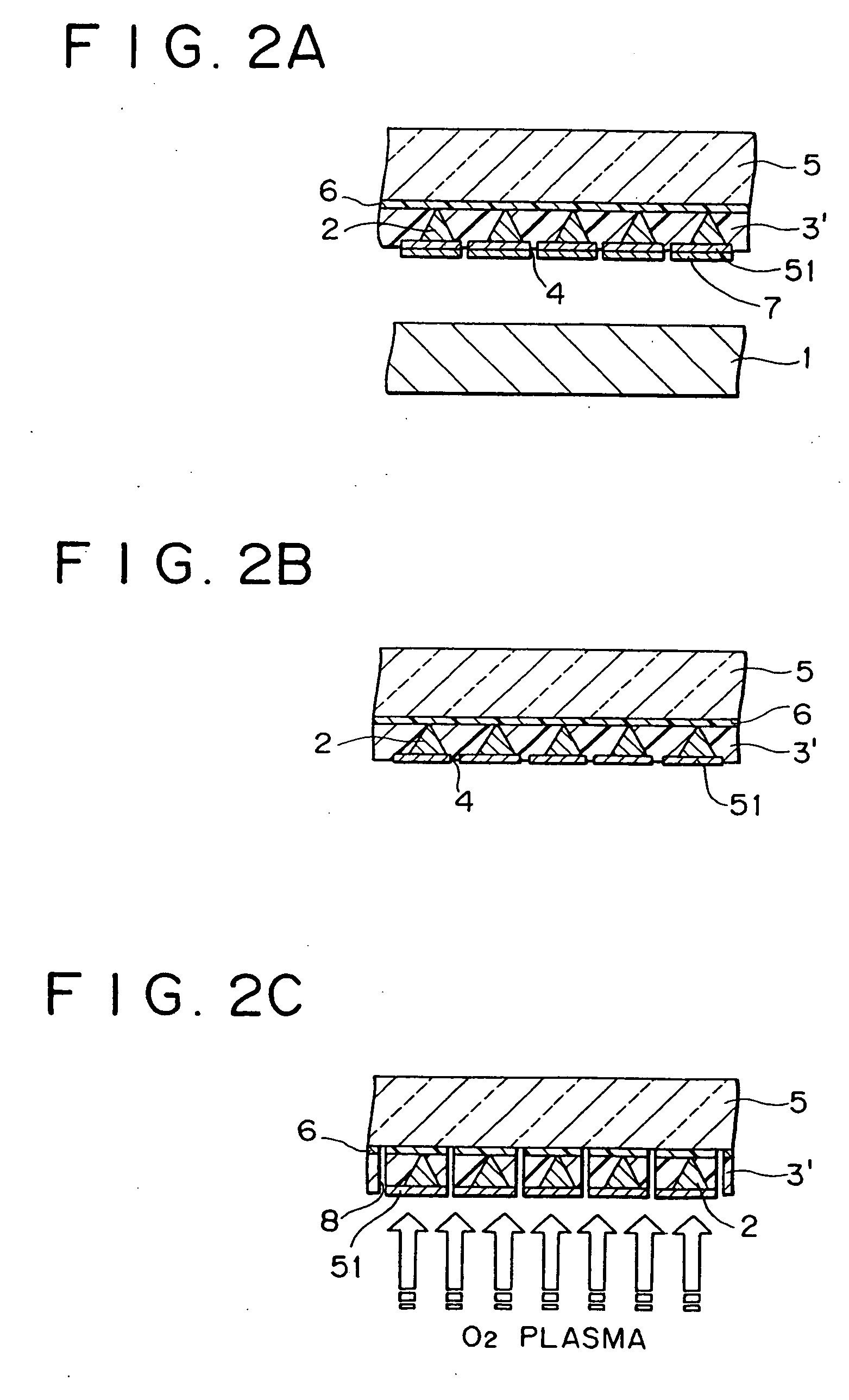Device transfer method and panel
a technology of device and transfer method, applied in the direction of basic electric elements, electrical apparatus, semiconductor devices, etc., can solve the problems of above-described cutting method, and difficulty in detecting the device itself, so as to prevent the resin layer covering the device, improve the strength of the resin buried device, and the panel is convenient to use.
- Summary
- Abstract
- Description
- Claims
- Application Information
AI Technical Summary
Benefits of technology
Problems solved by technology
Method used
Image
Examples
Embodiment Construction
[0032] Hereinafter, embodiments of the present invention will be described in detail with reference to the accompanying drawings.
[0033] First, there will be described devices used for carrying out the present invention with reference to FIGS. 11A and 11B, which devices are exemplified by light emitting diodes representative of light emitting devices in the following embodiments. FIG. 11A is a sectional view of such a light emitting diode and FIG. 11B is a plan view of the light emitting diode. As shown in these figures, a light emitting diode 2 is made from a gallium nitride (GaN) based semiconductor and is formed by crystal growth on a device formation substrate, for example, a sapphire substrate 1.
[0034] An under growth layer 51 made from a GaN based semiconductor is formed on the sapphire substrate 1, and a hexagonal pyramid shaped GaN layer 52 doped with silicon is formed on the under growth layer 51 as follows: namely, an insulating film 53 is formed on the under growth layer...
PUM
 Login to View More
Login to View More Abstract
Description
Claims
Application Information
 Login to View More
Login to View More - R&D
- Intellectual Property
- Life Sciences
- Materials
- Tech Scout
- Unparalleled Data Quality
- Higher Quality Content
- 60% Fewer Hallucinations
Browse by: Latest US Patents, China's latest patents, Technical Efficacy Thesaurus, Application Domain, Technology Topic, Popular Technical Reports.
© 2025 PatSnap. All rights reserved.Legal|Privacy policy|Modern Slavery Act Transparency Statement|Sitemap|About US| Contact US: help@patsnap.com



